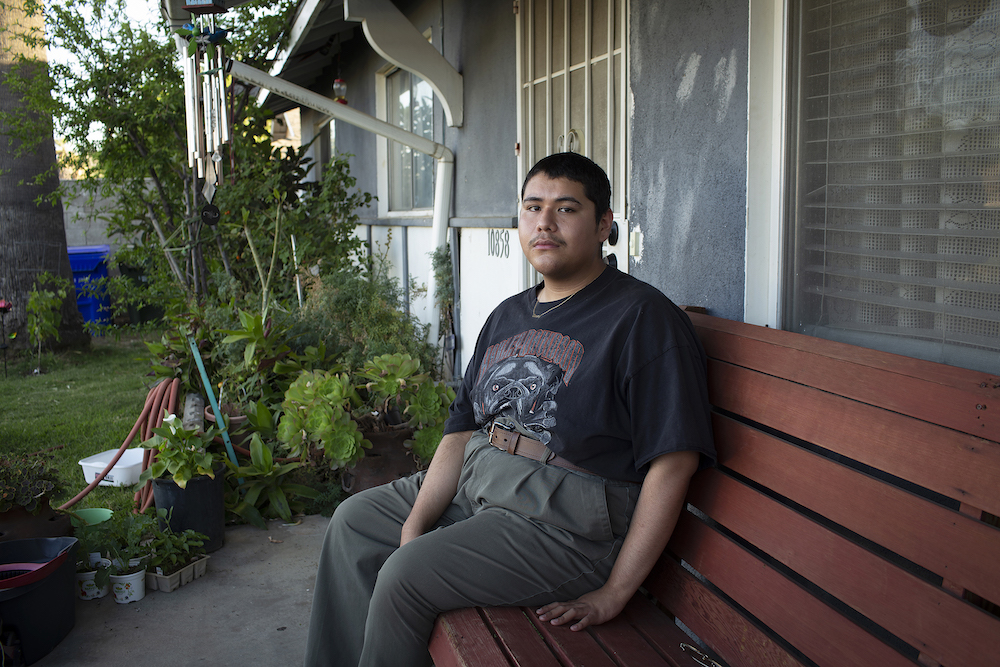Global pandemics democratize pain, suffering and loss. Therefore, who does one turn to when inquiring about world-reshaping events that impact the interpersonal and economic fabric of society? The answer is artists as they function as visual ethnographic historians. Utilizing photography and documentary, Tamara Cedré, along with collaborators James M. Dailey, Juan Carrillo-Dominguez, and Adrian Metoyer III, communicate these feelings through A Space Between Us, an exhibition on display in the Nancy and George Ellis Gallery at the Robert & Frances Fullerton Museum of Art. Created in 2020, their public art project was designed to catalyze the prevention of COVID-19 ravaging BIPOC communities. Relying on the stories of San Bernadino residents such as a warehouse worker, street vendor, and a business entrepreneur, they produced a project that elevated personal narratives around land, labor and migration.
Providing a humanized approach to disruptive change is the photograph, Danny Sigala (2020), which features a reclining Inland Empire resident whose eyes speak of displacement. Absent from his face is the plastic, fantastic, “say cheese” smile typical of portraiture. Instead, a face draped in worry and anxiety overshadows the scene as well as the green plants behind him straining to reach the sun. After the greedy stock shareholders of Pfizer-Biotech and Moderna laughed themselves all the way to the bank, BIPOC communities and people like Danny sat frozen in socioeconomic disillusionment.
After becoming an exhibition, Cedré and collaborators project evolved into a community-run zine, embodying the phrase articulated by Canadian Communications Theorist and Educator, Marshall McLuhan: the “medium is the message.” The newspaper, The Space: A space between us, A space for all of us, focuses on social issues that occur within the Inland Empire. Free to the public, the paper is not held captive by the benevolent censorship of venture capitalists. By contrast, this publication embodies the “Global Village Voices” of artists and the community. The Space, as an alternative form of news, simultaneously reflects the perspective of the people and shapes the perspective of the people.
Ultimately, A Space Between Us inspires dialogue and interrogates the hegemonic perceptions of communities as victims without a voice. Moreover, the imagery exhibited activates memory and inspires dialogue outside of museum walls. In fact, Cedré and her collaborators unapologetically demonstrate that creativity cannot be quarantined.


